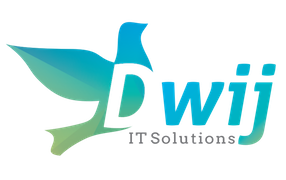
Web Development Practices
You may be a startup or fully developed organisation, your business depends on services you take from IT companies at one point of time. Sometimes we care more about budget and sometimes about quality of work. But its always important to make sure that your tech partner providing you the best services.
Web Development Practices you should expect from your Technology Partner
This article is about some web development standards and practices which you should check before accepting website or Web Application provided to you. You need not have to be tech savvy for this.
Following are some of those practices:
- Responsive Website:
Most of the modern websites are made to fit into multiple devices like mobiles, tablets, desktops.
Make sure your website supports this feature. Recently Google has started giving preference to websites with responsive design. - Development Platform:
Platform is totally depending on your requirement and budget.
You should choose a platform which is well acknowledged by developers.
Since 10 ten years open source technologies are booming and give lot more flexibility and low cost development options. You can go for premium or paid options, but no guarantee that it will serve you better on every aspect (Like SEO).
Currently trending open-source platforms (free):- PHP
- Ruby
- Python
- Node.js
- Development Framework:
Lot of users don’t know much about what exactly is this. Framework manages the website data dynamically in order to give proper user experience like searching, browsing, blogging.
Sometimes when website is simple/static, most developers skips using framework and make your website with plain HTML without any dynamism of data. This doesn’t create any problem for SEO, but left you no option for editing your website by yourself.
There are basically two types of Frameworks:- Core Frameworks – Frameworks are functional structure for website building. It can be customised fully in order to create large Web applications.
- CodeIgniter, Yii, Zend, CakePHP (PHP)
- Django, Flask, Pyramid (Python)
- Ruby on Rails, Lotus, Padrino (Ruby)
- CMS (Content Management System) – They are used to manage website content with ease using a in-built provided User Interface. Non-technical people can also create website using this with some hacks. Some examples are as below:
- WordPress (PHP) Popular & Easy SEO Friendly Solution
- Drupal (PHP)
- Joomla (PHP)
- Core Frameworks – Frameworks are functional structure for website building. It can be customised fully in order to create large Web applications.
- SEO (Search Engine Optimisation) Settings:
SEO is a technique which helps search engines(Like Google) find and rank your site higher than other related sites in response to a user’s search query. These basic settings doesn’t take much time in creation, but affects your website a lot when it comes to earning. - Coding Standards:
After creating your website from a freelancer or a company, it is not necessary that they will provide you service forever. But if you need someone else to modify your website or WebApp, then he should understand the old code structure. There are certain standards defined by frameworks which developers should follow. These standards simply states what to do and what not to do. This standards includes:- Following framework structures like MVC (Model View Controller)
- Avoiding loop-holes, data leaks, shortcut methods within system
- Method and Variable Naming Conventions
- Code Indentation
- VCS – (Revision/Version Control System)
These system records file changes over development time so that developers can recall specific version of file later. This help developers, tracking project changes and fixing bugs properly without affecting project timeline. These system are not required for small websites or CMS Systems, but for Medium and Large Web Applications. Some powerful VCS Tools below:- Git – Best VCS. Mostly used in Open-Source. Online Service provided by GitHub (Paid), BitBucket (Free)
- SVN – Mostly used Offline or in Closed Networks. Best Tool: TortoiseSVN
- Mercurial
- Unnecessary dependencies:
Sometimes developer follow the solutions which are easy to implement. Some of these solutions can affect your sites future scope dramatically. These solutions can be- An old expired code library which may no longer in use.
- Earlier framework version, which may be difficult to upgrade without affecting project code.
- Performance Optimisation:
A better website is always appreciated by its performance and not totally by its designs.
No one is going to appreciate design if it take minutes to load on mobiles browsers.
Optimisation concerns:- How fast website loads (Depending upon how may images and files are needed) ?
- Does all site images are optimised for size and quality ?
- Does it slows the mobile by making heavy animations ?
- User Friendly UI / UX:
Sometimes odd UI can affect negatively to your website. Their are certain standards about structure of website which includes Header, Menu, Footer, Content, Sidebars. These structures let Search Engines know exact things about your site, so as to rank it. User should easily get what he wants (Information) on your site without thinking much. You can use book “Don’t Make Me Think” by Steve Krug to understand these concepts in detail. - Documentation:
Their are certain documentations which should be created in order to understand project and its structure easily by the new developers. This is required for big Web Application projects and not for simple websites. Cost of creating such document can be extra. But a basic structural document should be provided for free by development company which should include following details:- Information about technology, platform and framework used.
- Basic information about project files. Sometimes such information is written at the start of file in comments. This may be required to give explicitly in case of complex project structure.
- Data Flow diagram of structure
Some of you might not have understood certain points. In case of a small website many of above practices are not needed, but if you are creating a web application with some business intelligence, either you should know these points or someone on your side, who does.
Apart from these points a good and reliable service can be beneficial for both parties in order to grow and excel in current market trends.


Hire Laravel Developer
Great Article. Thank you for sharing information that what web development should expect from technology partner. Keep it up.